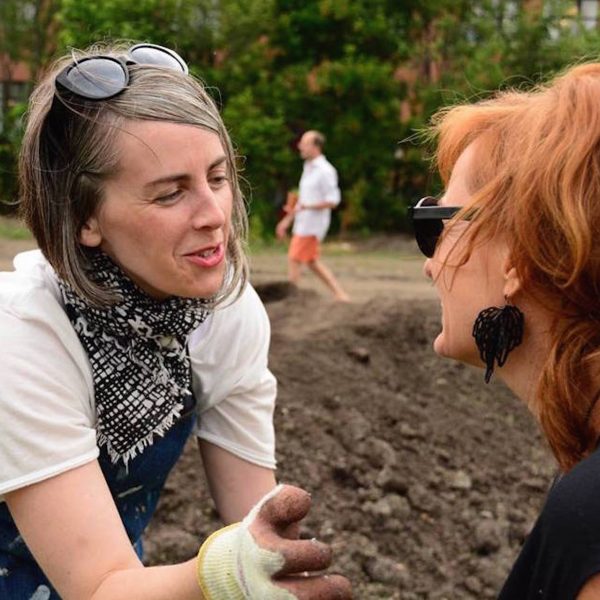Cynthia Hammond

Cynthia Hammond enseigne l’histoire de l’architecture, les arts visuels et les pratiques interdisciplinaires à l’Université Concordia. Depuis le début des années 1990, elle expose ses dessins et peintures. Cynthia crée des œuvres communautaires, majoritairement dans un esprit de collaboration, qui privilégient la mémoire et le droit à la ville.
—
Le Possible (2014)
Installation
Le Possible est une intervention concertée sur un paysage urbain protégé à Montréal nommé Le Champ des possibles par Cynthia Hammond, Camille Bédard, Shauna Janssen, Roger Latour, et Itai Peleg.
En octobre 2014, la compagnie de chemin de fer Canadian-Pacific a passé une section de ce domaine au bulldozer ; ce projet d’art répond à cette situation en invitant les visiteurs de la galerie à prendre un semis du Champ des possibles à la maison et d’en prendre soin durant l’hiver. Au printemps 2015, la phase finale du projet prendra la forme d’un événement de plantation collective dans le lot rasé afin d’aider à restaurer la flore perdue et la faune qui y est associée.
Now a substantial portion of Le Champ lies barren, toxic soil once more brought to the surface.Le Possible is a three-part art project that reflects upon but also responds to the special characteristics of this “friche urbaine.” For this exhibition, artist and urban landscape historian Cynthia Hammond is collaborating with naturalist Roger Latour, an expert on the biodiversity of Le Champ, to gather and present 60-100 specimens of plant life that are crucial to Le Champ’s biodiversity. Visitors to Studio XX may take a seedling home, and care for it over the winter. In addition, Hammond has invited short written reflections on Le Champ, the recent loss of its plant life, and the meaning of this unique green space for its many users and advocates. These texts are a collective contribution to the digital publication that accompanies this exhibition. In spring 2015, the final phase of Le Possible will take the form of a group planting event in the razed lot, to help restore the lost flora and its associated fauna, and add to the visibility of this important piece of Montreal’s urban life and sustainability.